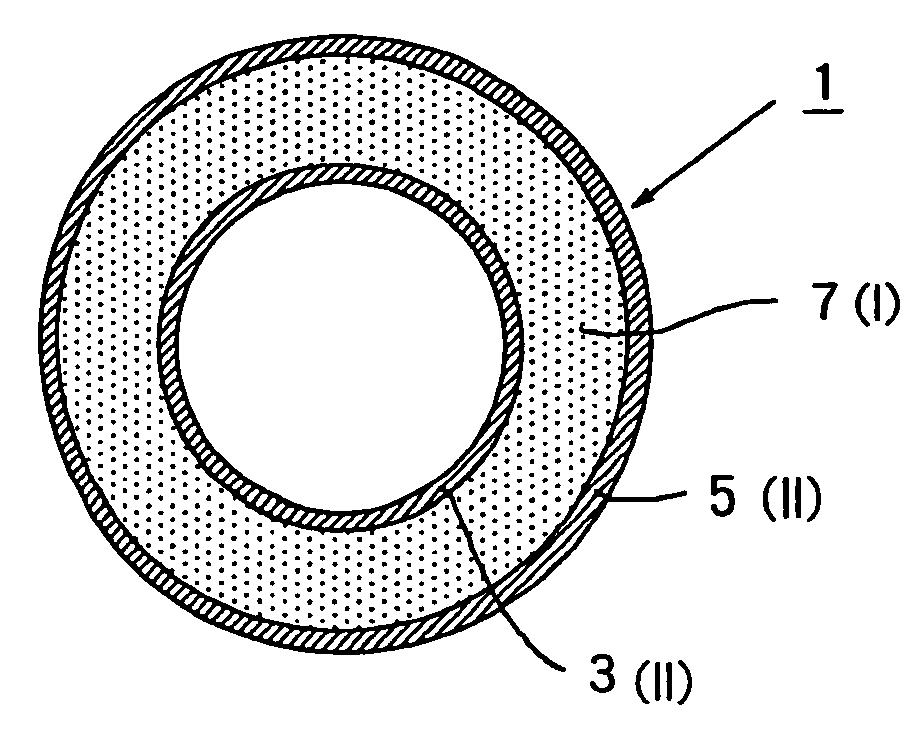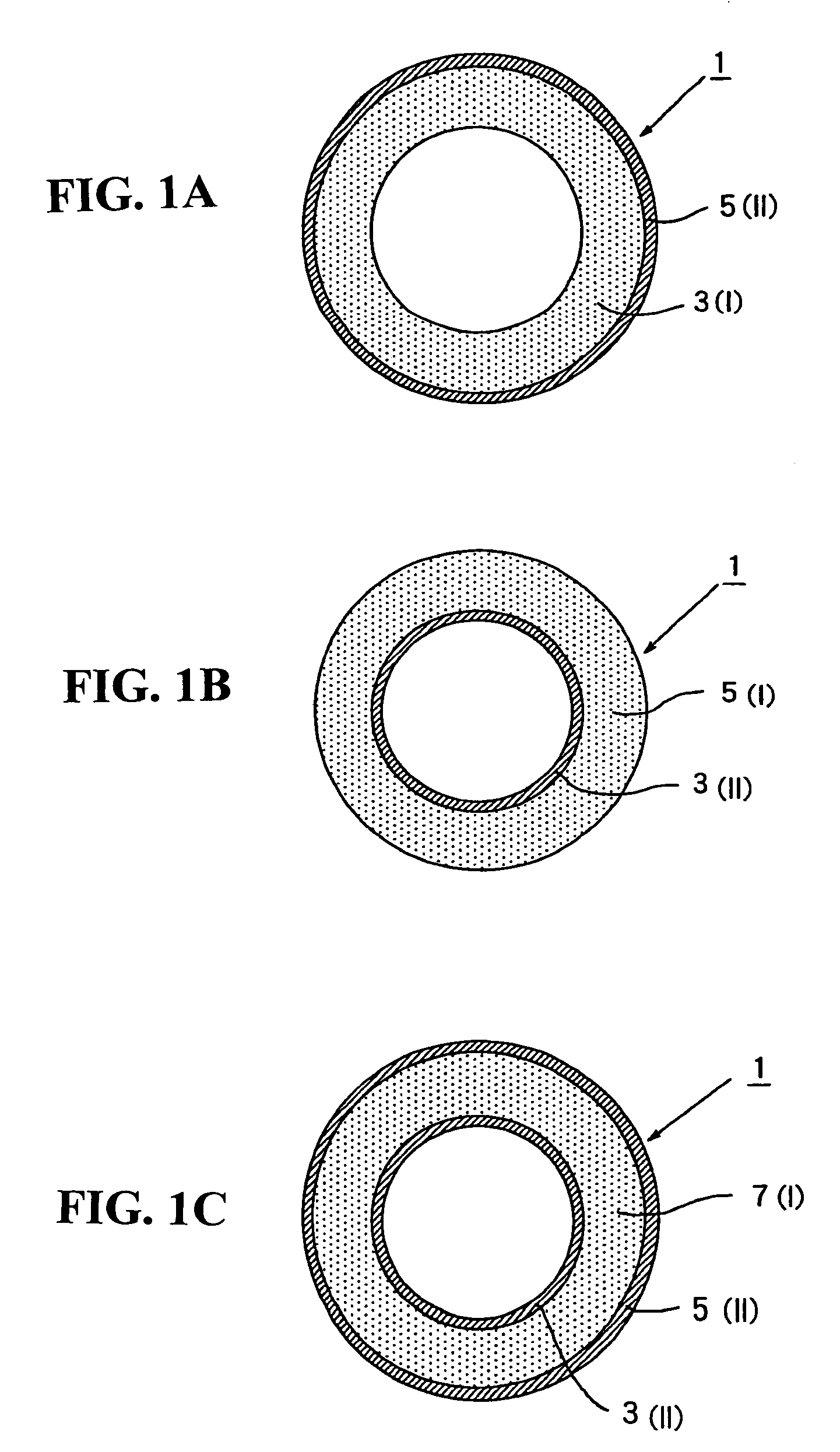Multilayered tube and medical supply comprising multilayered tube
a multi-layered tube and medical supply technology, applied in the direction of other medical devices, intravenous devices, synthetic resin layered products, etc., can solve the problems of insufficient inertia, inconvenient material use, and kinking of tubes when made of single materials
- Summary
- Abstract
- Description
- Claims
- Application Information
AI Technical Summary
Problems solved by technology
Method used
Image
Examples
referential example 1
Determination of Amount Ratio for Layer (II)
[0087]For the layer (II), polypropylene (F327) and a styrene-isoprene-styrene hydrogenated block copolymer (HVS-3) were mixed in amount ratios shown in Table 1 to prepare a tube having an outer diameter of 6.8 mm, and the tube was measured for sticking strength during sterilization and strength of solvent bonding. Table 1 shows the results.
[0088]
TABLE 1Sticking strengthStrength of bondingAmount ratio of PPof one tubeto tube having a(a) / Copolymer (b)to anotherdifferent diameter100 / 0 No sticking 6 N70 / 30Less than 10 N90 N50 / 5034 N97 N40 / 6036 N105 N
[0089]According to the results in Table 1, when the amount ratio of the polypropylene resin (a), in the amount ratio of the polypropylene resin (a) and the copolymer (b), is 70 or less (when the amount ratio of the copolymer (b) is 30 or greater), the bonding strength of the tube to the tube having a different diameter is good. However, when the amount ratio of the polypropylene resin (a) is 40 or...
referential example 2
Preparation of Copolymer No. 1
[0111]In a pressure vessel where dry nitrogen had been substituted, styrene was polymerized at 60° C. in cyclohexane as a solvent in the presence of s-butyllithium as a polymerization initiator, and then TMEDA was added as a Lewis base. Then, isoprene and styrene were consecutively polymerized to give a styrene-isoprene-styrene block copolymer. The thus-obtained block copolymer was hydrogenated in cyclohexane in the presence of Pd / C as a catalyst under a 2 MPa hydrogen atmosphere, to give a hydrogenated block copolymer (the hydrogenated block copolymer obtained in Referential Example 2 will be abbreviated as “Copolymer No. 1” hereinafter). Table 3 shows a styrene content, a number average molecular weight, a vinyl bond content and a hydrogenation ratio of the obtained Copolymer No. 1.
referential example 3
Preparation of Copolymer No. 2
[0112]Styrene, a mixture of isoprene with butadiene [isoprene / butadiene=60 / 40 (mass ratio)] and styrene were consecutively polymerized in a cyclohexane solvent in the presence of s-butyllithium and TMEDA in the same manner as in Referential Example 2, to give a styrene-(isoprene / butadiene)-styrene block copolymer. The thus-obtained block copolymer was hydrogenated in the same manner as in Referential Example 2, to give a hydrogenated block copolymer (the hydrogenated block copolymer obtained in Referential Example 3 will be abbreviated as “Copolymer No. 2” hereinafter). Table 3 shows a styrene content, a number average molecular weight, a vinyl bond content and a hydrogenation ratio of the obtained Copolymer No. 2.
PUM
| Property | Measurement | Unit |
|---|---|---|
| radius | aaaaa | aaaaa |
| mass % | aaaaa | aaaaa |
| mass % | aaaaa | aaaaa |
Abstract
Description
Claims
Application Information
 Login to View More
Login to View More - R&D
- Intellectual Property
- Life Sciences
- Materials
- Tech Scout
- Unparalleled Data Quality
- Higher Quality Content
- 60% Fewer Hallucinations
Browse by: Latest US Patents, China's latest patents, Technical Efficacy Thesaurus, Application Domain, Technology Topic, Popular Technical Reports.
© 2025 PatSnap. All rights reserved.Legal|Privacy policy|Modern Slavery Act Transparency Statement|Sitemap|About US| Contact US: help@patsnap.com



